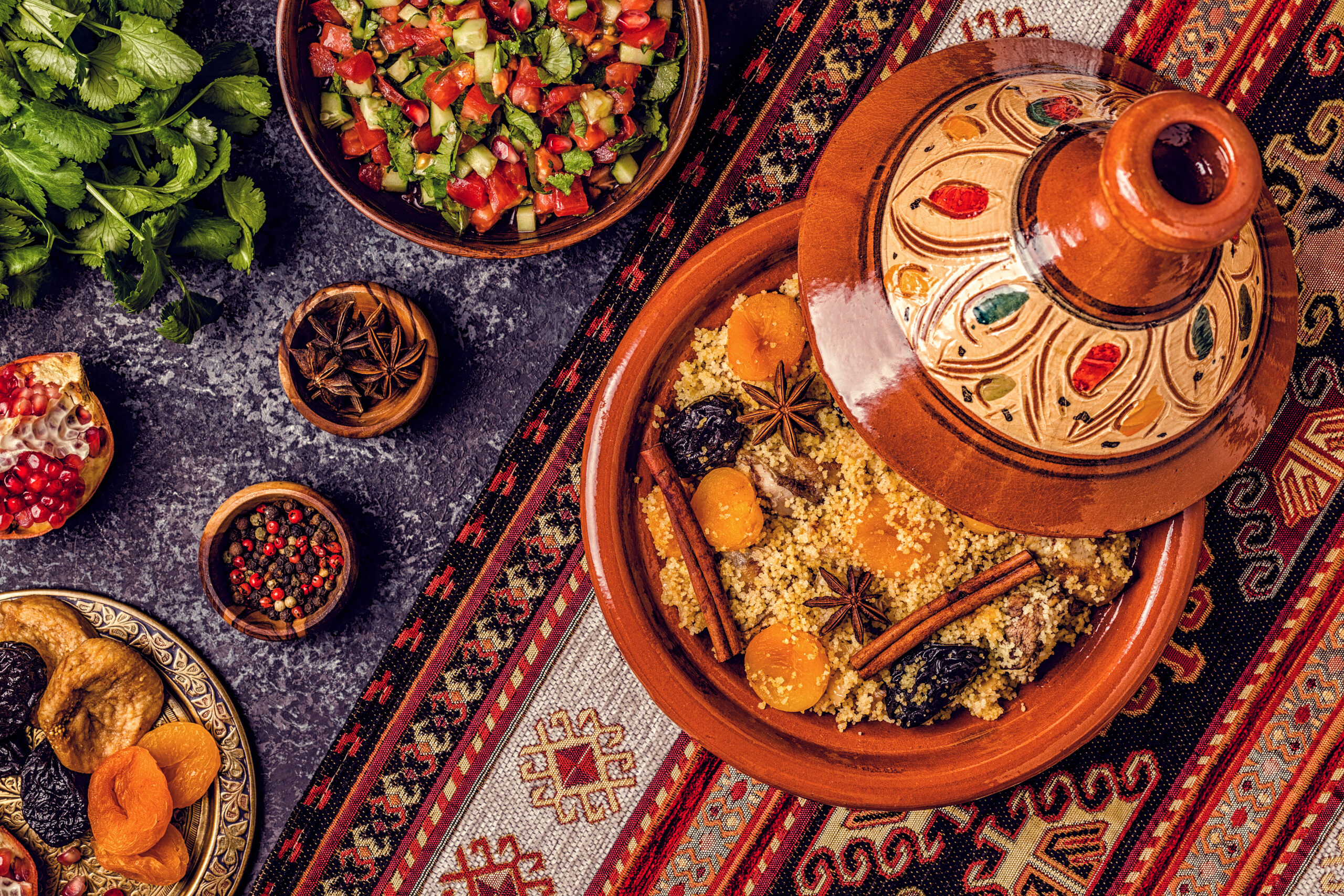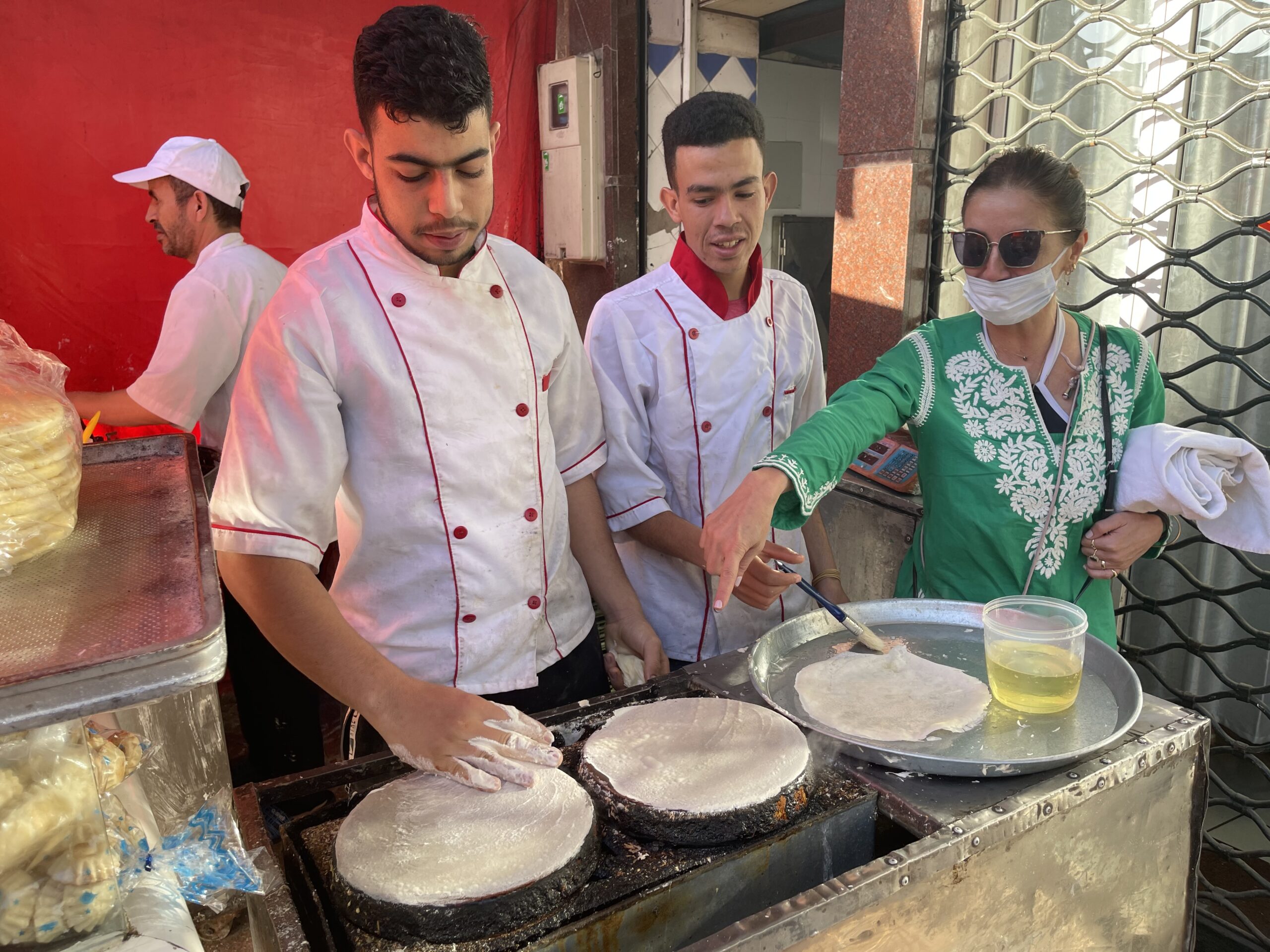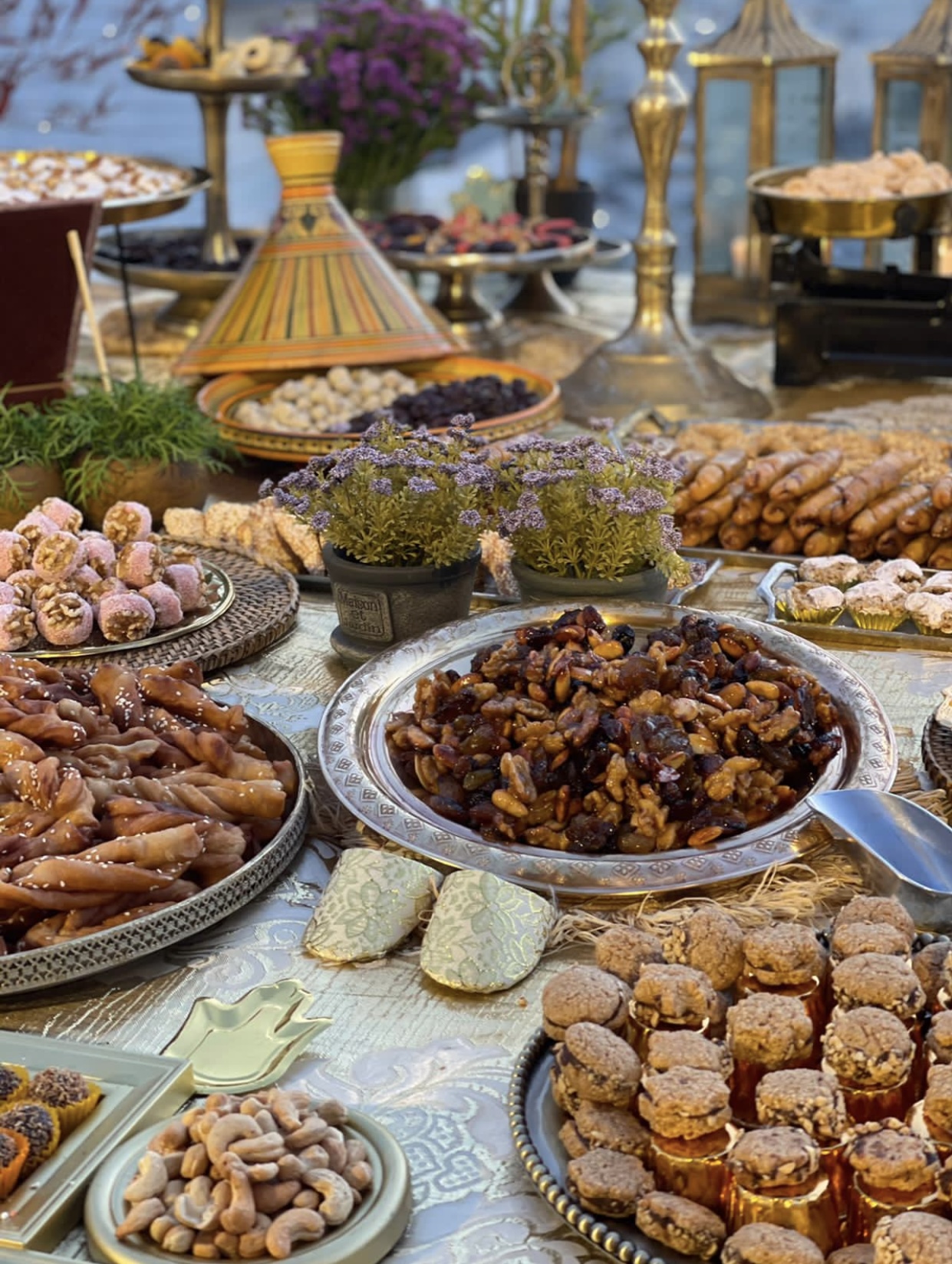Get ready to dive into the delicious world of Moroccan traditional food. From fragrant tagines to sweet pastries, this guide will take you on a tasty journey through Morocco’s rich culinary heritage.
Tagine Treasures

Tagine is a key part of Moroccan traditional food, slowly cooked in a special clay pot. This method makes the meat very tender and brings out the rich flavors of the spices and vegetables.
The unique shape of the tagine pot helps trap steam, which keeps the food moist and flavorful. This slow cooking technique allows the spices to blend perfectly, creating a dish that’s both aromatic and delicious.
Using a mix of spices like cumin, turmeric, and cinnamon, tagine dishes offer a wonderful taste experience. Each ingredient adds to the overall flavor, making it a standout choice for those looking to enjoy Moroccan traditional food.
Couscous Delights

Couscous, a key part of Moroccan traditional food, is known for its light and fluffy texture. It easily absorbs the flavors of the meats and vegetables it’s served with, making each bite a delightful taste experience.
This versatile dish is often enjoyed during family gatherings and celebrations in Morocco. Its ability to blend with a variety of ingredients makes it a favorite choice for both simple and elaborate meals.
Apart from being delicious, couscous is also a quick and easy dish to prepare, requiring minimal cooking time. This makes it a convenient option for busy households looking to enjoy a traditional Moroccan meal.
Savory Pastilla

Pastilla is a special Moroccan pie that mixes sweet and savory tastes. It’s filled with spiced meat and topped with powdered sugar and cinnamon. This dish is perfect for those who love trying new and exciting foods.
Made with layers of thin pastry, pastilla offers a crunchy texture that contrasts with its juicy filling. This popular Moroccan traditional food is often served at celebrations and special events, showcasing the country’s rich culinary heritage.
The unique combination of flavors in pastilla, featuring ingredients like almonds and saffron, makes it a must-try dish. This Moroccan traditional food highlights the country’s love for blending spices and creating unforgettable dishes.
Street Food Gems

In Morocco, you can find tasty treats like kebabs and fried fish on nearly every corner. These snacks are not only delicious but also very affordable, making them a favorite among locals and tourists alike.
One of the highlights of Moroccan street food is its variety. From spicy meat skewers to sweet pastries, there’s something to satisfy every craving. Street vendors often prepare food right in front of you, ensuring it’s fresh and flavorful.
Don’t miss trying the famous Moroccan traditional food called ‘bissara,’ a rich fava bean soup. It’s a comforting dish often served with olive oil and warm bread, perfect for a quick and hearty meal on the go.
Sweet Pastries

Moroccan pastries offer a tasty treat for those who love sweets. Made with honey, nuts, and spices, these pastries, like baklava and chebakia, provide a burst of flavor with every bite.
Baklava is a popular choice among Moroccan pastries. Layers of thin pastry dough, filled with chopped nuts and sweetened with honey, create a deliciously rich dessert that is hard to resist.
Chebakia, often enjoyed during Ramadan, is another favorite. This sesame cookie, shaped into a flower, is fried and then soaked in honey, offering a delightful mix of crunchy and sweet in every bite.
Khobz Bread

Khobz bread is a staple in Moroccan traditional food, known for its round, flat shape. It’s often baked in communal ovens, bringing a sense of community to the process. This bread is perfect for soaking up the rich flavors of Moroccan dishes.
Made from simple ingredients like flour, yeast, and water, Khobz bread is easy to prepare at home. Its crusty exterior and soft interior make it a versatile addition to any meal, whether you’re enjoying a hearty stew or a light salad.
One of the charming aspects of Khobz bread is its adaptability. It can be baked in various sizes and thicknesses, catering to different preferences. Whether served with a bowl of soup or used as a base for sandwiches, it’s a comforting and familiar presence at the table.


